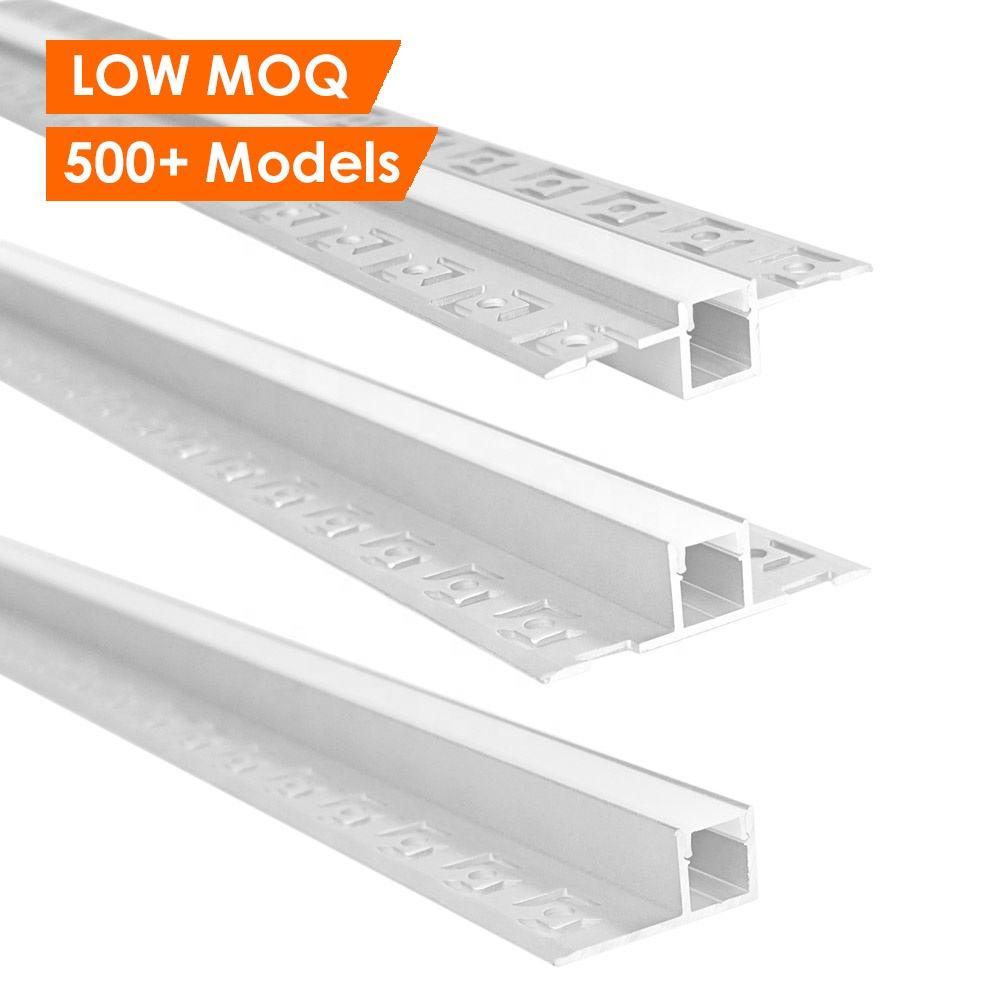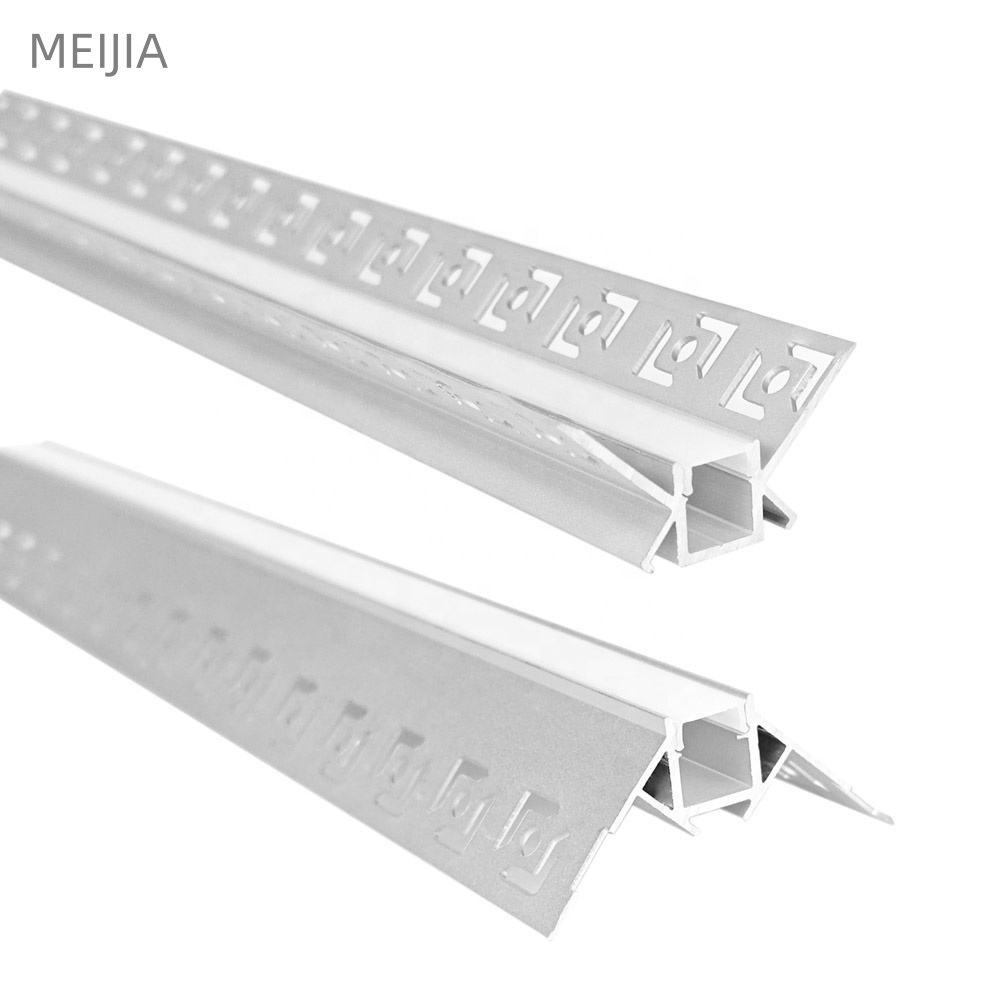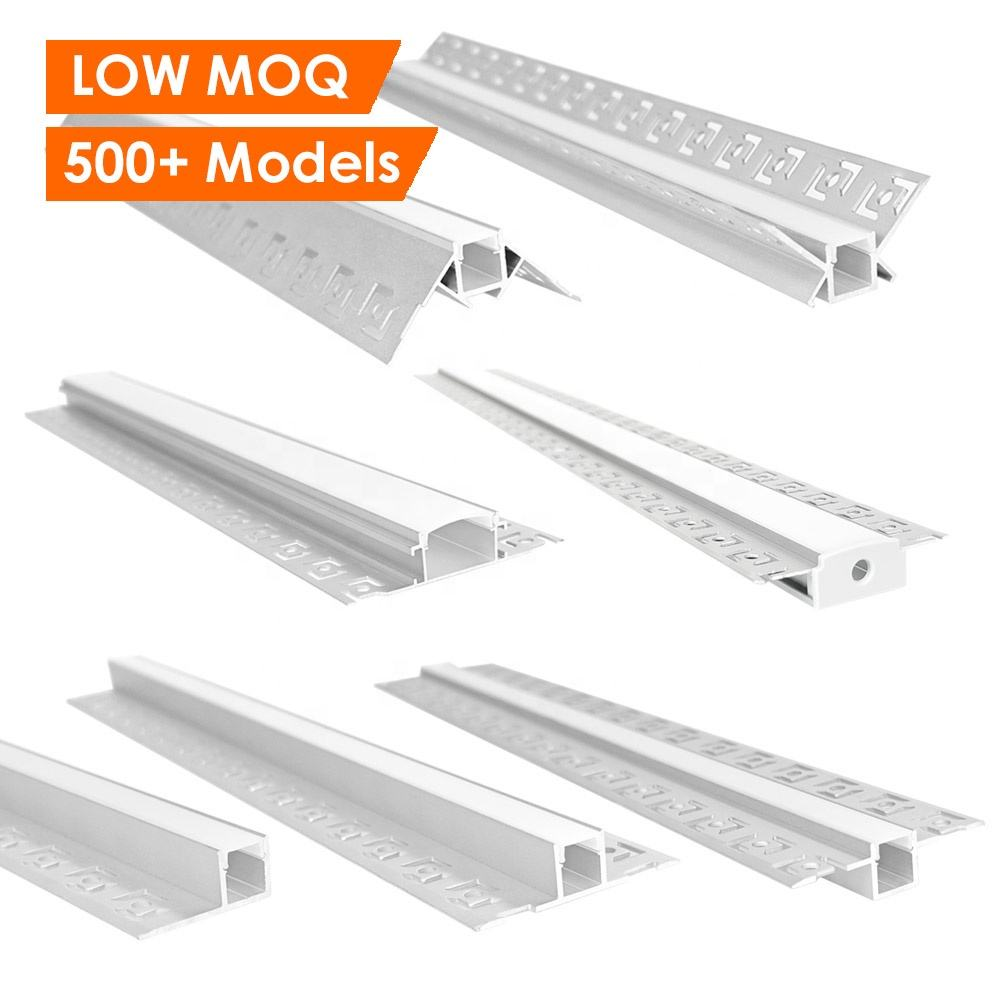In modern architectural lighting design, plaster In LED aluminum profile (gypsum board embedded LED profiles) have become the “secret weapon” of designers. They can perfectly hide the light source in the wall or ceiling, creating a minimalist lighting effect without borders and exposed lamps.
Do you know how many shapes this LED strip light profile comes in?
If you think there is only one “linear” type, then you may have greatly underestimated its design potential.
Plaster drywall LED strip Channels are rich in variety and various in shape. They can not only adapt to different spatial structures, but also meet the lighting needs of both creativity and practicality. Let’s take a look at it below.

[1. Linear LED profile] This is the most basic and widely used trough shape. It can be installed horizontally, vertically or diagonally on the wall or ceiling to form a simple and smooth light stripe, which is the most modern way of expression.
✅ Applicable scenarios: ceiling outline, corridor lighting, cabinet underlighting, background wall decorative lines, etc.
【2. L-shaped (inside/outside corner) LED profile】
L-shaped light trough is used in corners of walls, ceiling corners, etc. It can naturally fit into 90-degree corners and add soft light effects to three-dimensional space. It is also a very suitable tool for creating a “sense of spatial boundaries”.
✅ Applicable scenarios: the connection between walls and ceilings, stair corners, column edges, etc.
【3. U-shaped/center embedded light LED channel】
U-shaped light trough is usually installed in the middle of the ceiling or the center of the wall, creating a large area of soft light effect through a wider luminous surface. It can be used as main lighting or decorative lighting.
✅ Applicable scenarios: living room central axis ceiling, relief ceiling design, art wall.
【4. T-shaped light LED channel】
T-shaped light trough can emit light in both directions and is often used in symmetrical lighting design or space division lighting composition. This type of light trough has a unique shape and a more layered light and shadow structure.
✅ Applicable scenarios: corridor symmetrical lighting, conference room, open space dividing line.
【5. Shadow Gap Light LED channel】
Also known as frameless shadow line profile, this light trough is designed for “light hidden in shape”. It is often used in the gap between the wall and the ceiling, and the light appears suspended.
✅ Applicable scenarios: simple style residences, modern office spaces, high-end commercial places.
【6. Curved / customizable flexible LED channel】
Want a wavy or circular light structure? Flexible Plaster profiles can achieve a variety of nonlinear light paths. Not only can it be bent according to the building structure, but also a unique graphic can be customized.
✅ Applicable scenarios: curved walls, cylinders, art decoration areas, creative commercial spaces.
【7. Double trough / multi-directional LED channel】
This profile is designed with two or more light strip channels, which can emit light upward and downward at the same time, or achieve different angles of light beam output on the same surface, to meet the dual needs of lighting and atmosphere.
✅ Applicable scenarios: high-end residences, clubs, complex functional spaces, background wall layered lighting.

Why is the “shape” of the light LED Channel important?
Choosing the right profile shape not only affects the appearance, but also directly determines the way light is expressed in the space. Different shapes of light troughs represent different lighting intentions, such as:
Creating visual guidance
Emphasizing structural contours
Realizing hidden atmosphere light
Enhancing the “sense of completeness” of the design language
Every angle and every linear contour are part of the visual composition of the space. So the light is not what you see, but what you shape]
【Conclusion】
From classic straight lines and L-shaped, to central U-shaped, T-shaped, shadow seam, curve, dual-channel… Each light trough shape is an expression of spatial language. Whether you are a designer, decoration contractor, or you are building a dream home, understanding these different shapes of light troughs will open up a whole new world of lighting design for you.












